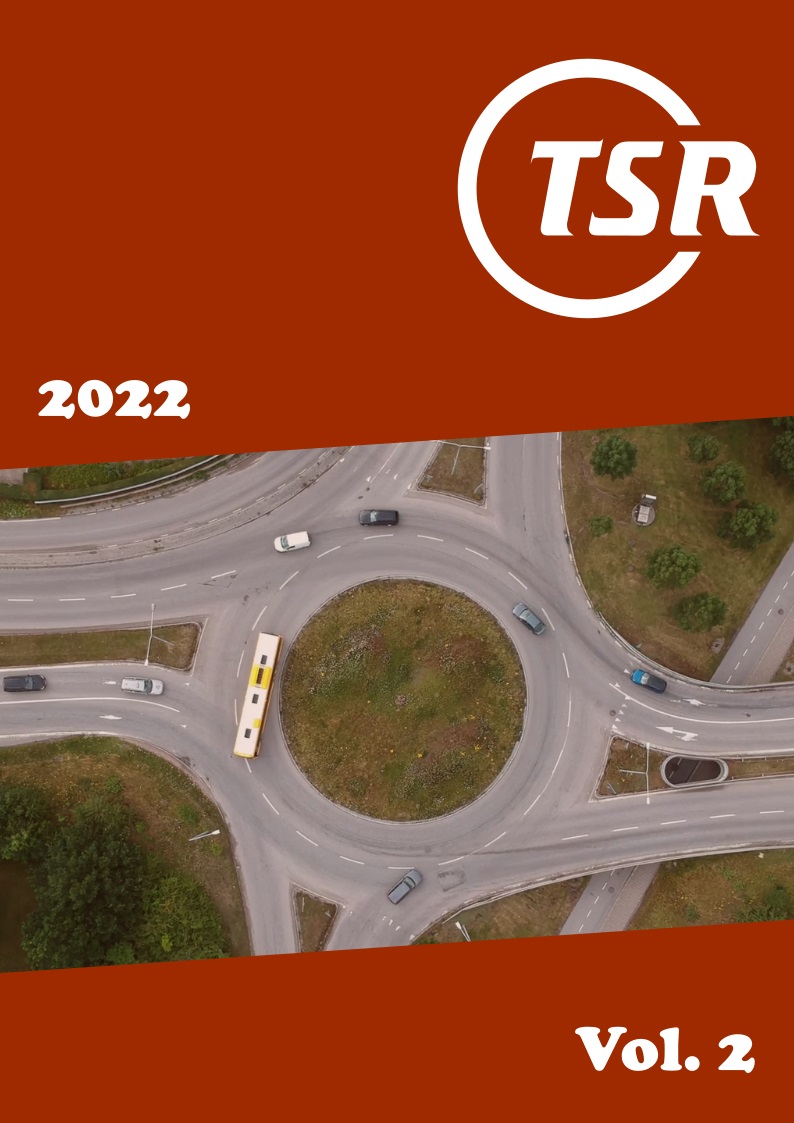Descriptive analysis of reports on autonomous vehicle collisions in California: January 2021–June 2022
DOI:
https://doi.org/10.55329/xydm4000Keywords:
autonomous vehicles, collisions, disengagements, safetyAbstract
The characteristics of autonomous vehicles’ collisions from 2021 and the first half of 2022 in California confirm trends reported in previous years. Driving in autonomous mode was associated with fewer instances in which the AV was deemed to be at fault in a collision. Most collisions in autonomous mode were rear-end collisions at intersections. Single vehicle collisions occurred mostly in manual mode. Collisions with vulnerable road users occurred mostly while the autonomous vehicle was in manual mode, often right after disengagement from autonomous mode. In collisions with other vehicles that occurred after disengagement, the other vehicles were frequently deemed to be at fault. Compared to 2021, the collision reports from the first half of 2022 indicate higher shares of collisions in autonomous mode, rear-end collisions, and collisions with vulnerable road users.
Downloads
References
Alambeigi, H., A. D. McDonald, S. R. Tankansala (2020), ‘Crash Themes in Automated Vehicles: A Topic Modeling Analysis of the California Department of Motor Vehicles Automated Vehicle Crash Database’, presented at Transportation Research Board (TRB) 99th Annual Meeting (Washington, D.C., USA: 12–16 January 2020), https://doi.org/10.48550/arXiv.2001.11087.
Biever, W., L. Angell, S. Seaman (2019), ‘Automated Driving System Collisions: Early Lessons’, Human Factors: The Journal of the Human Factors and Ergonomics Society, 62 (2), 249–259, https://doi.org/10.1177/0018720819872034.
Boggs, A. M., R. Arvin, A. J. Khattak (2020a), ‘Exploring the who, what, when, where, and why of automated vehicle disengagements’, Accident Analysis & Prevention, 136, 105406, https://doi.org/10.1016/j.aap.2019.105406.
Boggs, A. M., B. Wali, A. J. Khattak (2020b), ‘Exploratory analysis of automated vehicle crashes in California: A text analytics & hierarchical Bayesian heterogeneity-based approach’, Accident Analysis & Prevention, 135, 105354, https://doi.org/10.1016/j.aap.2019.105354.
Chen, H., H. Chen, R. Zhou, et al. (2021), ‘Exploring the Mechanism of Crashes with Autonomous Vehicles Using Machine Learning’, Mathematical Problems in Engineering, 2021, 5524356, https://doi.org/10.1155/2021/5524356.
Christensen, R. (1990), Log-linear models (Heidelberg: Springer).
Das, S., A. Dutta, I. Tsapakis (2020), ‘Automated vehicle collisions in California: Applying Bayesian latent class model’, IATSS Research, 44 (4), 300–308, https://doi.org/10.1016/j.iatssr.2020.03.001.
Dixit, V. V., S. Chand, D. J. Nair (2016), ‘Autonomous Vehicles: Disengagements, Accidents and Reaction Times’, PloS ONE, 11 (12), e0168054, https://doi.org/10.1371/journal.pone.0168054.
DMV (2022), ‘Autonomous vehicle collision reports’ (Department of Motor Vehicles, State of California), https://www.dmv.ca.gov/portal/vehicle-industry-services/autonomous-vehicles/autonomous-vehicle-collision-reports/, accessed 25 February 2022.
Favarò, F. M., N. Nader, S. O. Eurich, et al. (2017), ‘Examining accident reports involving autonomous vehicles in California’, PloS ONE, 12 (9), e0184952, https://doi.org/10.1371/journal.pone.0184952.
Goodall, N. J. (2021), ‘Comparison of automated vehicle struck-from-behind crash rates with national rates using naturalistic data’, Accident Analysis & Prevention, 154, 106056, https://doi.org/10.1016/j.aap.2021.106056.
Kutela, B., S. Das, B. Dadashova (2022), ‘Mining patterns of autonomous vehicle crashes involving vulnerable road users to understand the associated factors’, Accident Analysis & Prevention, 165, 106473, https://doi.org/10.1016/j.aap.2021.106473.
Leilabadi, S. H., S. Schmidt (2019), ‘In-depth Analysis of Autonomous Vehicle Collisions in California’, presented at IEEE Intelligent Transportation Systems Conference (ITSC) (Auckland, New Zealand: 27–30 October 2019), https://doi.org/10.1109/ITSC.2019.8916775.
Petrović, Đ., R. Mijailović, D. Pešić (2020), ‘Traffic Accidents with Autonomous Vehicles: Type of Collisions, Manoeuvres and Errors of Conventional Vehicles’ Drivers’, Transportation Research Procedia, 45, 161–168, https://doi.org/10.1016/j.trpro.2020.03.003.
Posaner, J. (2022), ‘EU plans to approve sales of fully self-driving cars’, Politico (5 July), https://www.politico.eu/article/eu-plans-to-approve-sales-of-fully-self-driving-cars/, accessed 25 August 2022.
SAE (2021), ‘Taxonomy and Definitions for Terms Related to Driving Automation Systems for On-Road Motor Vehicles’ (SAE International), Standard J3016-202104, https://www.sae.org/standards/content/j3016_202104/, accessed 4 March 2022.
Wang, S., Z. Li (2019), ‘Exploring the mechanism of crashes with automated vehicles using statistical modeling approaches’, PloS ONE, 14 (3), e0214550, https://doi.org/10.1371/journal.pone.0214550.
Xu, C., Z. Ding, C. Wang, Z. Li (2019), ‘Statistical analysis of the patterns and characteristics of connected and autonomous vehicle involved crashes’, Journal of Safety Research, 71, 41–47, https://doi.org/10.1016/j.jsr.2019.09.001.
Ye, W., C. Wang, F. Chen, et al. (2020), ‘Approaching autonomous driving with cautious optimism: analysis of road traffic injuries involving autonomous vehicles based on field test data’, Injury Prevention, 27, 42–47, https://doi.org/10.1136/injuryprev-2019-043402.
Downloads
Published
How to Cite
Issue
Section
License
Copyright (c) 2022 Petr Pokorny, Alena Høye

This work is licensed under a Creative Commons Attribution 4.0 International License.









